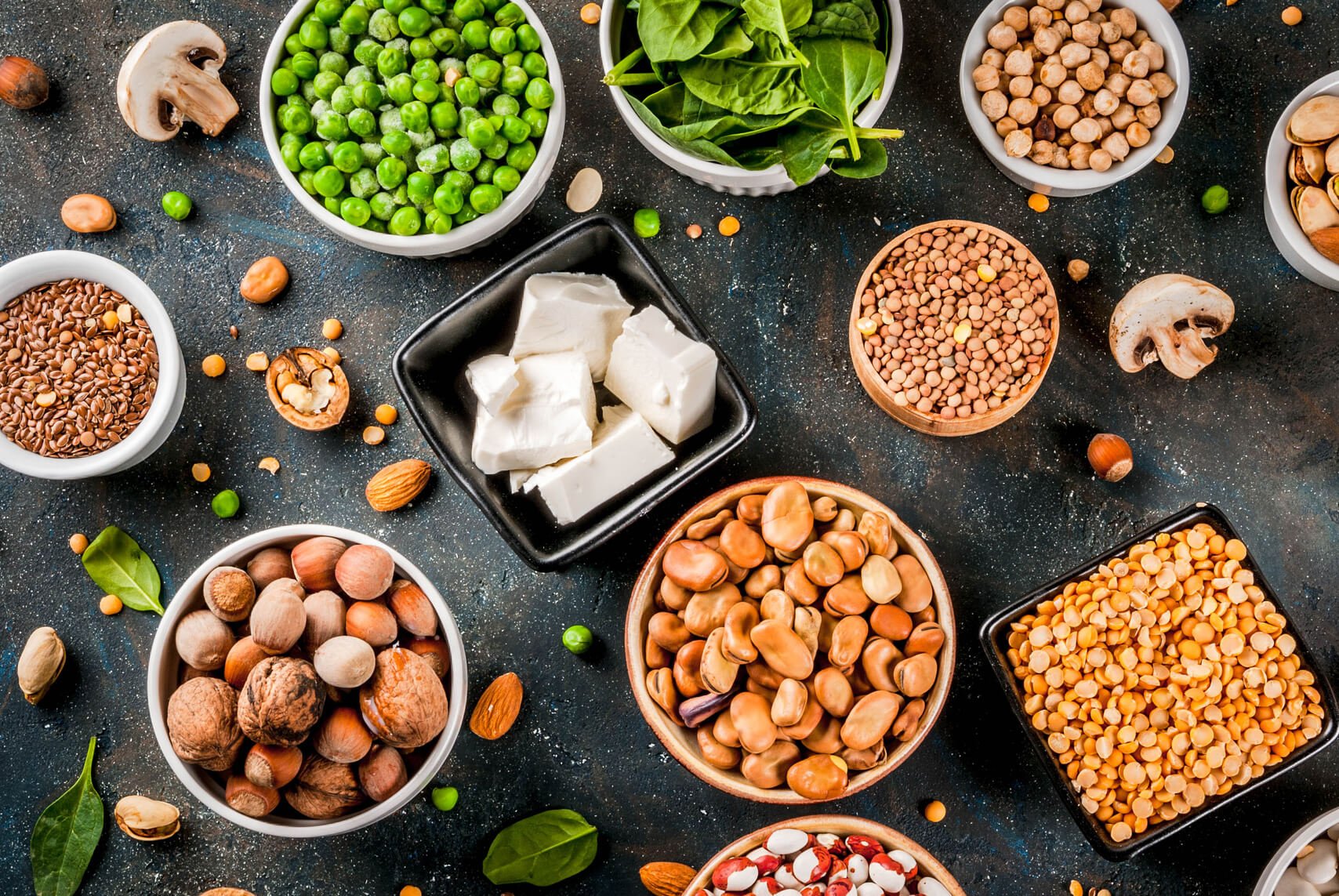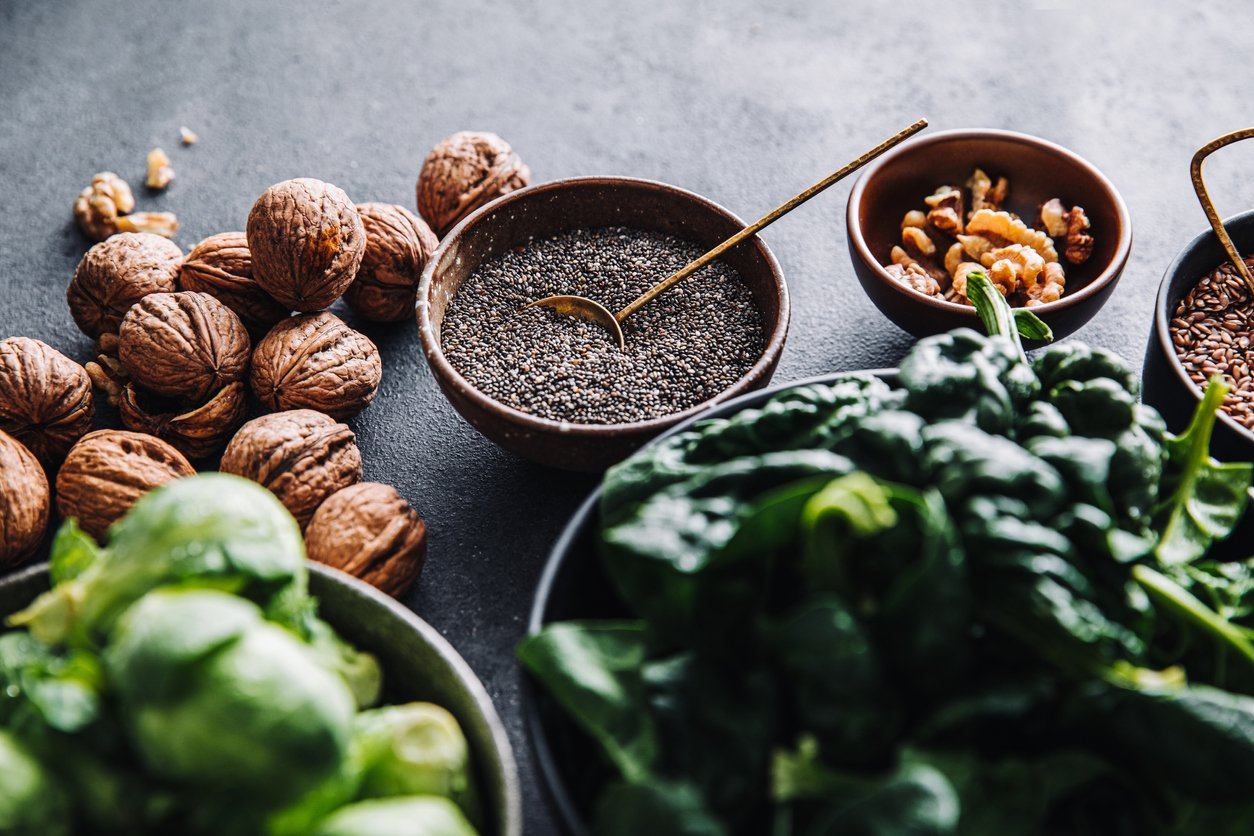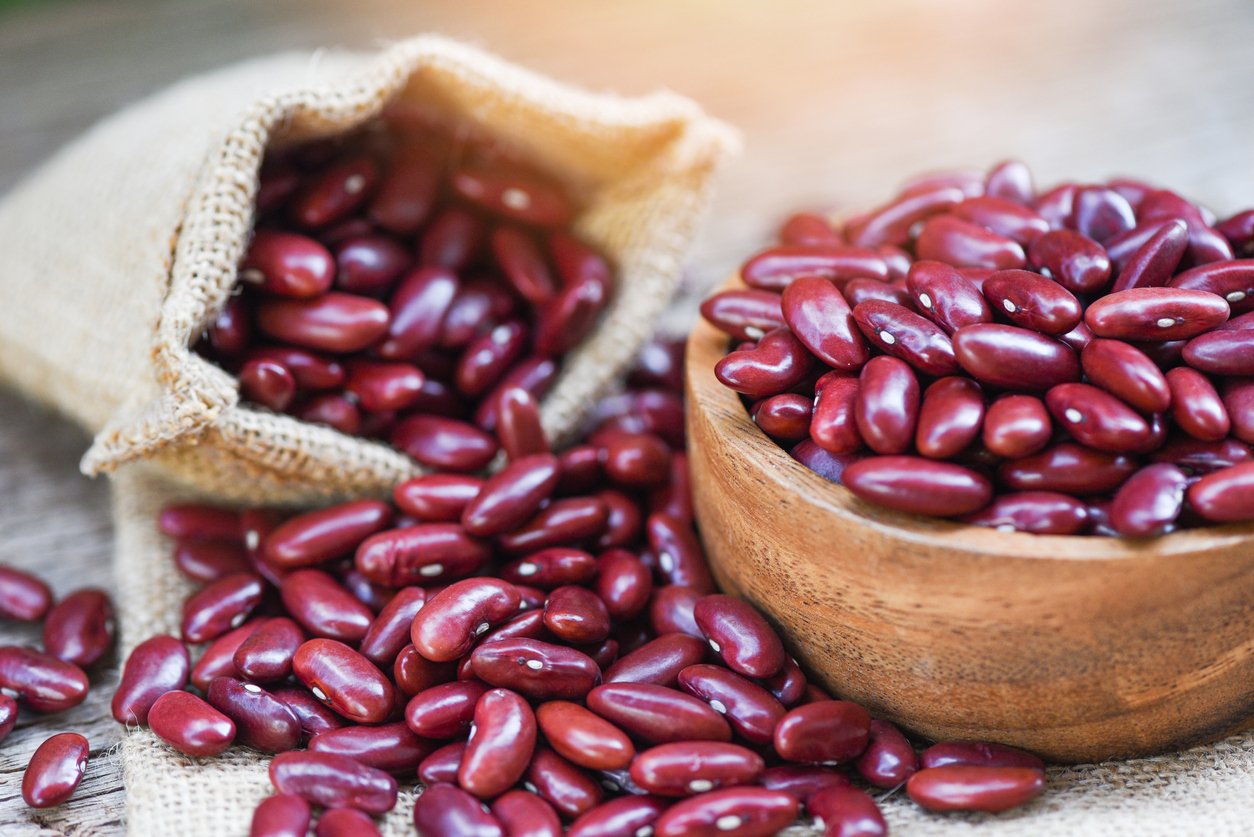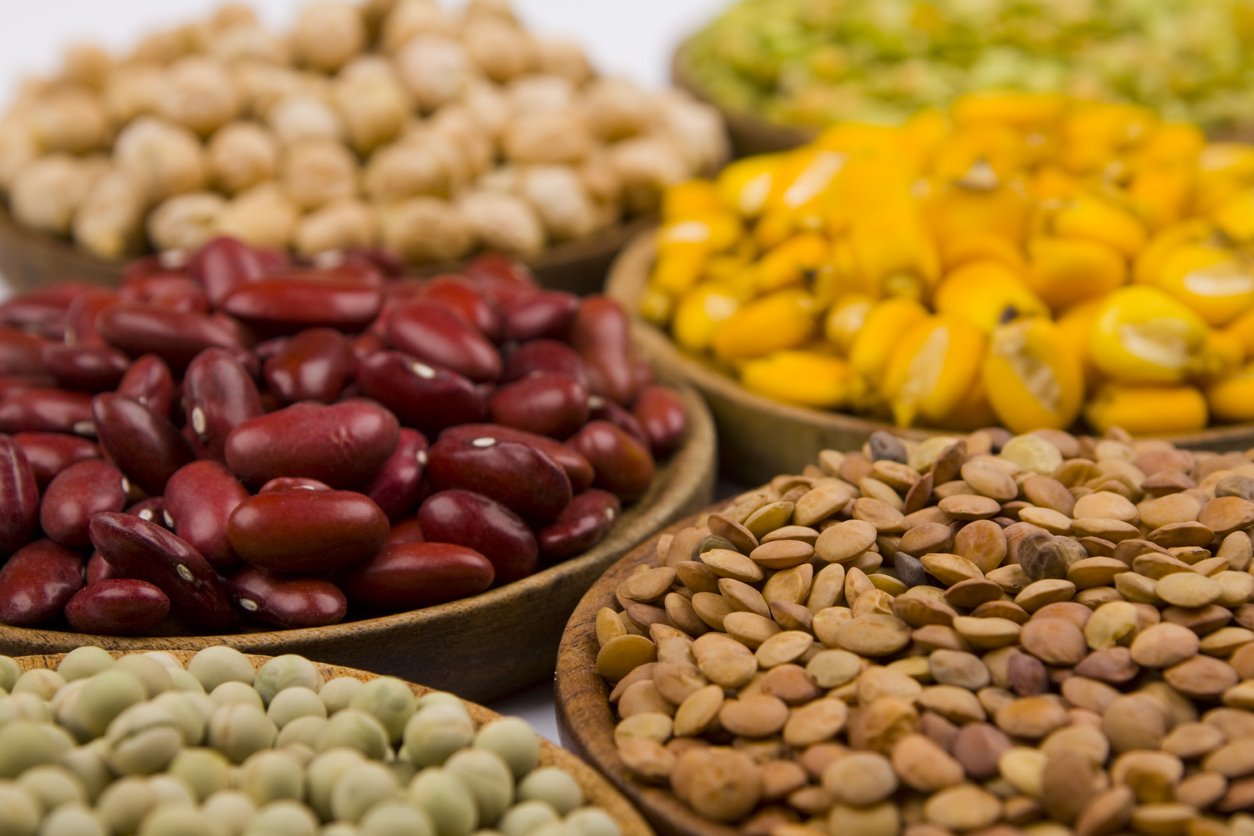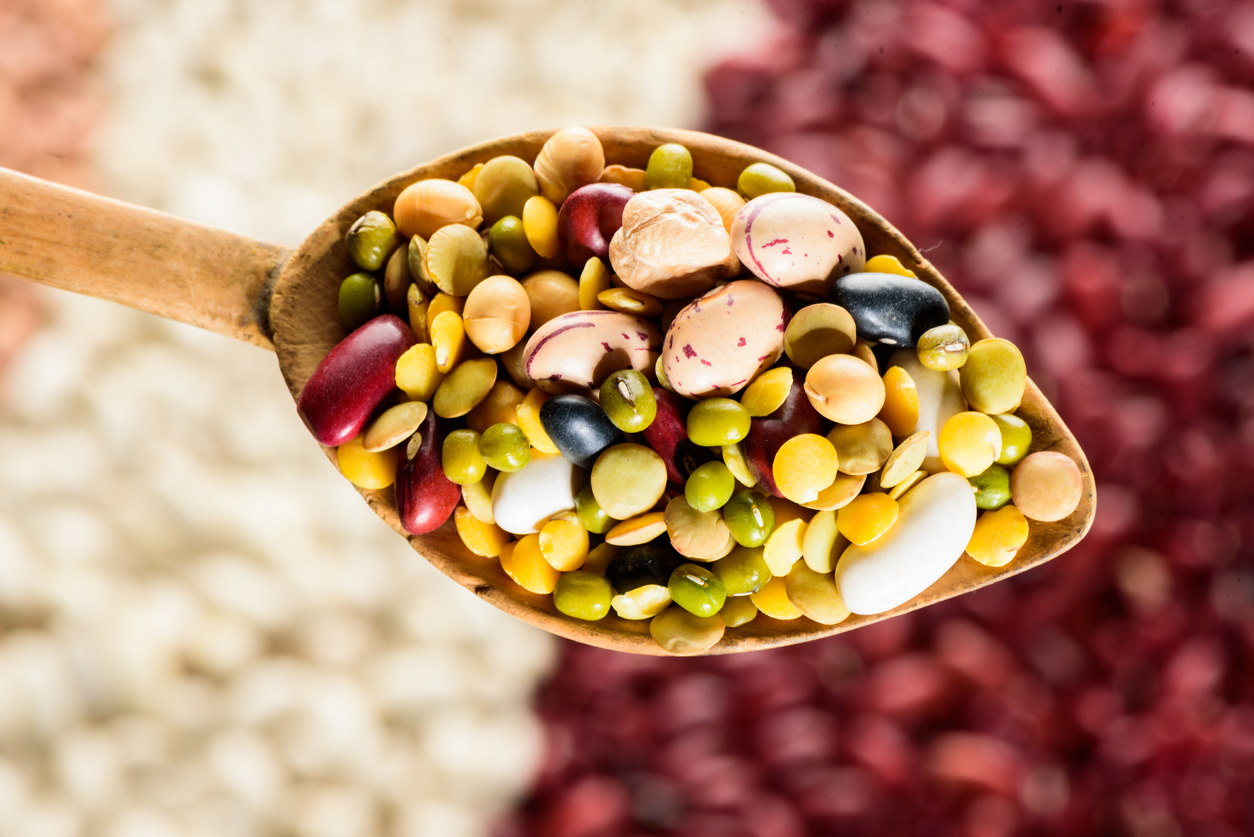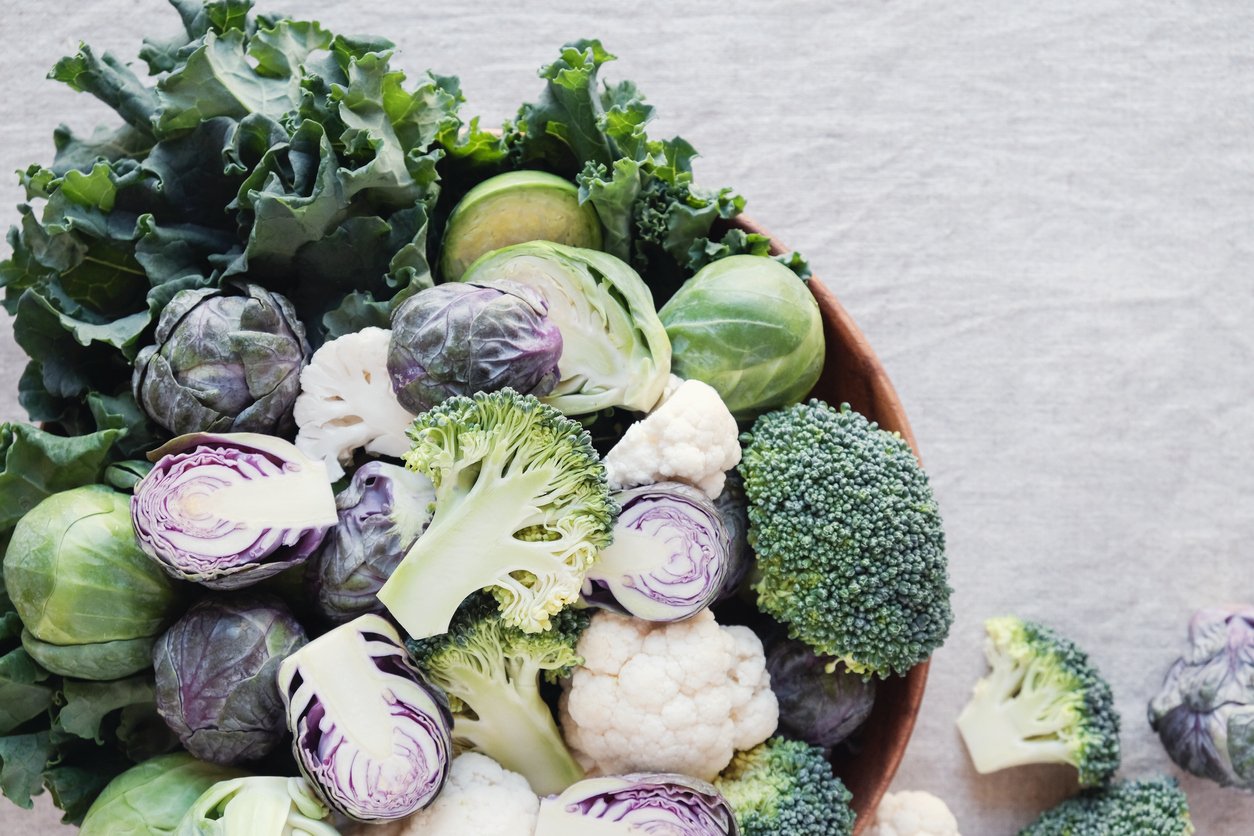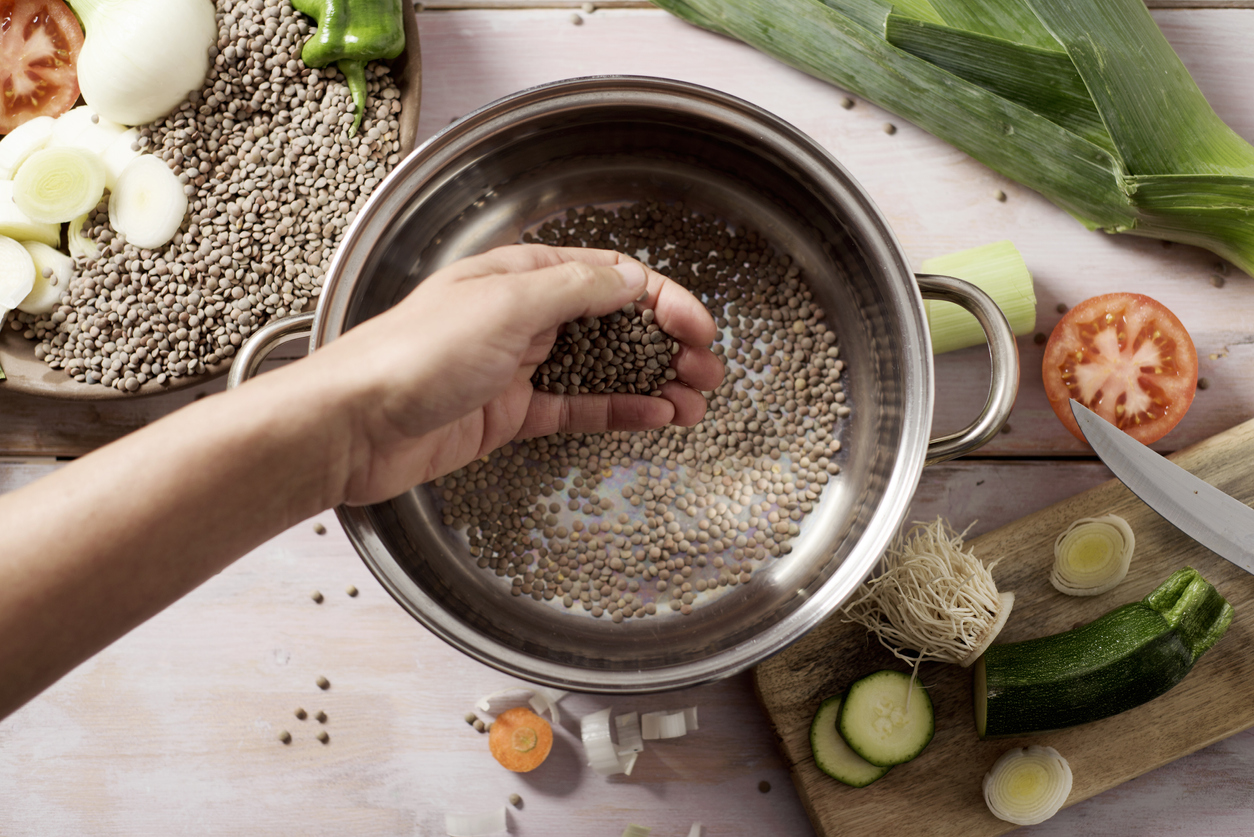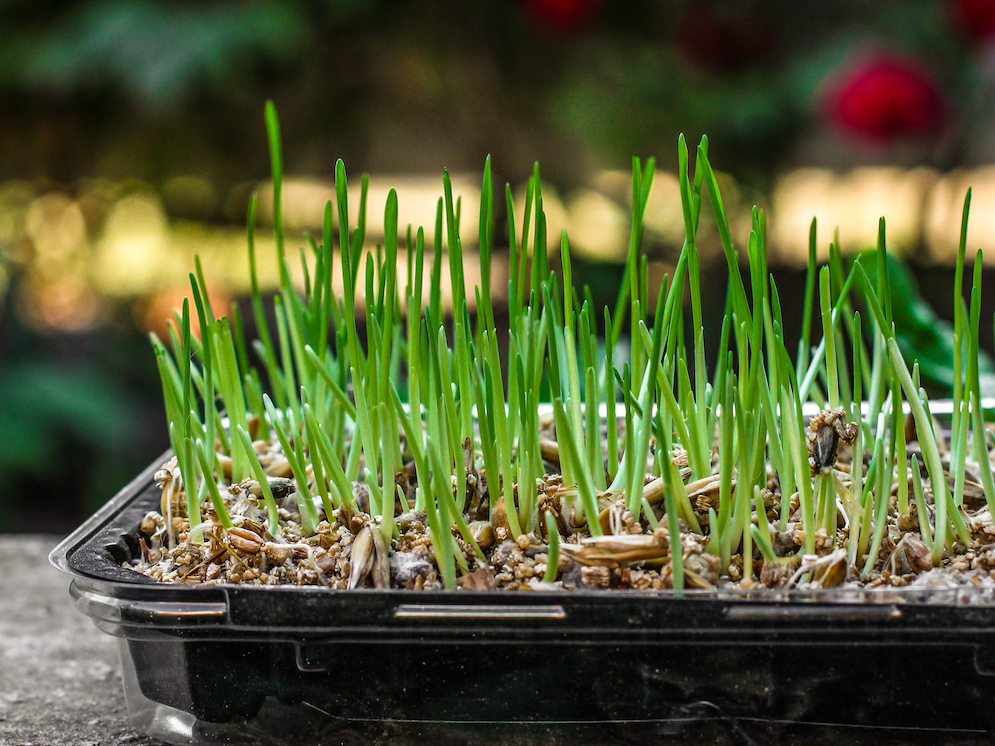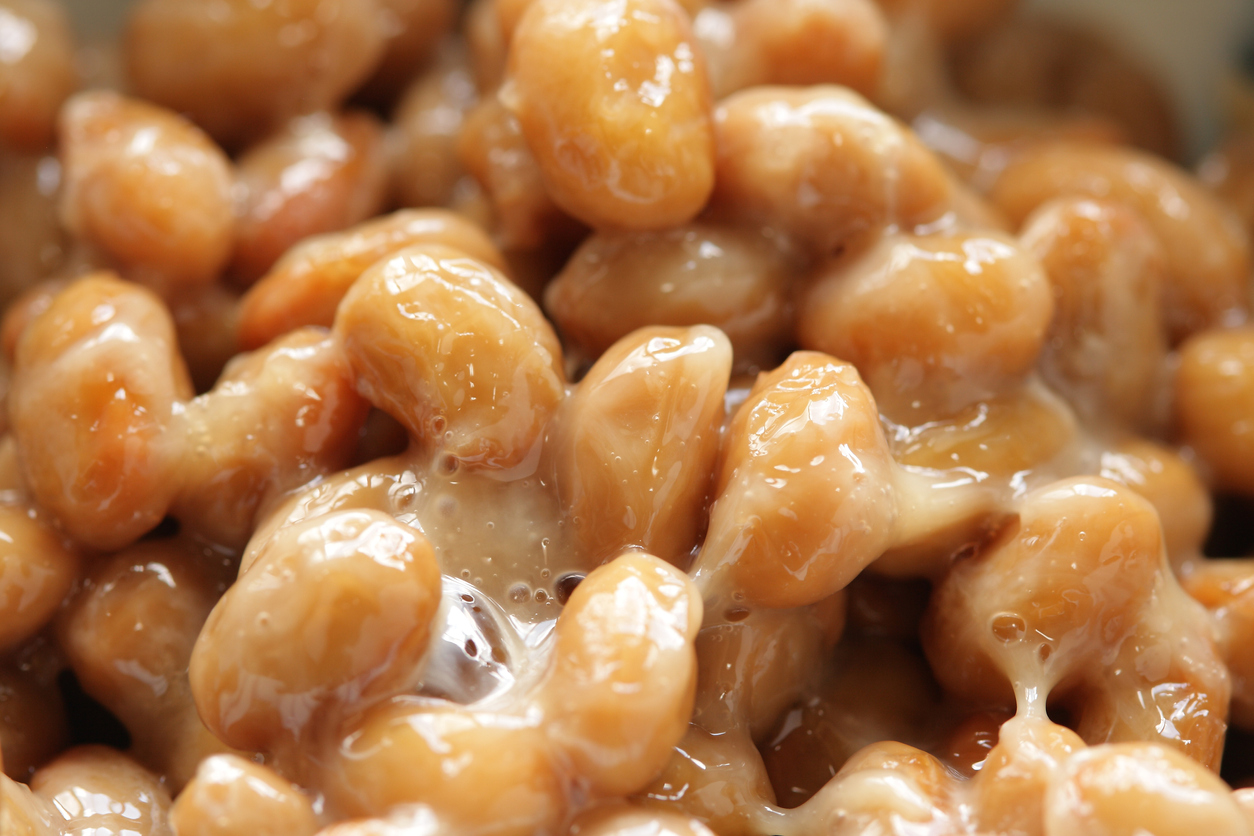What comes to mind when you hear the word “antinutrients”? Nothing good, right? Supervillainous dietary compounds that sap us of our health and strength and are to be avoided at all costs. They’re like the Doctor Doom of food.
In the world of nutritional science, antinutrients are a hot topic. Journalists, online influencers, media personalities, celebrities, and even some well-meaning doctors talk about compounds such as lectins and phytates as things to be feared. Cookbooks featuring recipes devoid of them abound.
You may have heard that antinutrients can cause everything from nutritional deficiencies to autoimmune diseases. But where’s the evidence? What does the research really say? And should you worry about your intake of these compounds, or even reconfigure your diet to avoid them entirely?
Or — and stay with me here — is it possible that they’ve been unfairly named? Could some of them actually provide health benefits when consumed as part of a varied and wholesome diet?
Might these alleged supervillains simply be misunderstood superheroes, or weak paper tigers, after all? Let’s see what the evidence says.
What Are Antinutrients?
Technically, a compound can be called an antinutrient if it can interfere with the absorption of other nutrients. It may, for example, limit your body’s ability to absorb vitamins and minerals from the digestive tract. Antinutrients are mostly found in plant foods, but also exist in some animal products.
Antinutrients act by binding to particular nutrients in food, thus making it harder for our bodies to absorb those nutrients. Based on this action, some researchers have theorized that antinutrient compounds may contribute to nutritional deficiencies. Additionally, they might cause inflammation (especially in the gut) and possibly contribute to autoimmune disease. And to top it off, some of the antinutrients mimic hormones in our bodies and therefore might act as endocrine disruptors.
So are plants out to get us? In a certain sense, yes, sort of. Plants contain all sorts of active compounds that perform a host of functions to help the plant survive, grow, and reproduce. When it comes to survival, since plants can’t run away from predators, they need other strategies to protect themselves from being eaten.
One of these strategies is to produce compounds that deter animals, insects, bacteria, and fungi from eating them. Toxic in large doses, these compounds prevent not so much the predation of an individual plant but the wholesale destruction of an entire species. The predators can only handle so much of the plant before the compound’s effects become a deterrent. At the same time, they can benefit us when we eat them in small quantities.
It’s an example of the toxicology maxim first coined by the 16th-century Swiss physician Paracelsus: “All things are poison, and nothing is without poison; the dosage alone makes it so a thing is not a poison.” Just as you can build strength by lifting weights that are heavy for you, your body can benefit from the stressors imposed by antinutrients. And as we’ll see below, research demonstrates that consuming a wide variety of the foods that are high in many of these phytochemicals can reduce your risk of chronic diseases.
Types of Antinutrients
While theoretically many plant compounds can be considered antinutrients, just a few receive the most attention in practice. These include:
- Tannins
- Oxalates
- Lectins
- Phytates
- Phytoestrogens
- Goitrogens
And here are some other antinutrient types that get less press:
- Alkaloids
- Protease inhibitors
- Lipase inhibitors
- Amylase inhibitors
- Saponins
Are Antinutrients Safe?
When nutritional science comes up with a theory about what food compounds are good or bad for people, one of the first steps is to test that theory on animals. This is so routine that it may be hard to see how weird it really is. Typically, the way this works is that the researchers isolate the compound and feed it to animals in huge quantities. Quantities that, when adjusted for the difference between animal and human weights, represent amounts that no human would possibly consume as part of a normal diet. (Our view on the use of animals in medical research is here.)
So we’ve got three problems when we try to apply the lessons of these trials to humans. First, animals and humans have different dietary needs and respond differently to foods. Second, we metabolize whole foods very differently from fractionated food compounds. And third, we don’t know if a huge dose that causes harm means that a lower dose will also be a problem.
So it’s easy to see why relying on animal studies can lead to so much nutritional confusion and ambiguity.
Another arena in which antinutrients can look bad is in vitro, which is to say examining the effects of isolated antinutrients on human cells cultivated in test tubes. Again, there’s no way to know if those results say anything about the effects of real food in the living bodies of real people.
Foods with Antinutrients Are Not the Enemy
And here’s the thing — while people are arguing about these details, we know something else for sure. Eating the foods that contain these antinutrients is generally associated with superior human health and longevity. In other words, avoiding the plant-based foods that contain these antinutrients means depriving ourselves of some of the healthiest foods on the planet.
So even though most plant-based foods contain at least some level of antinutrients, you’d actually be much more at risk of nutritional deficiencies by not eating these foods than by including them in your diet. Saying no to plant foods because they contain antinutrients is kind of like not cashing your paycheck to avoid paying income taxes.
When isolated from the foods that contain them, antinutrients may lead to some unwanted effects. But when consumed as part of a varied whole foods diet, they participate in diverse and complex interactions with vitamins, minerals, and other phytonutrients in ways that simple models can’t predict.
And it gets more complicated than that. Antinutrients can also interact with our gut microbiota, which in turn can alter both the bioavailability and biological effects of the compounds. Teasing out a simplistic cause-and-effect relationship of any nutrient within such a complex system, as some anti-antinutrient crusaders attempt to do, appears to be impossible.
Antinutrient Benefits & Downsides
The preponderance of evidence points in one direction — for most people, antinutrients are not a concern as long as you’re consuming them as part of a balanced diet that contains a variety of unprocessed, whole, plant foods. Plant-based diets that contain these compounds also contain thousands of other compounds in the food matrix, many of which counteract the potential effects of the “antinutrients.”
In fact, antinutrients, far from being problematic or simply neutral, may actually provide some health benefits and may even be therapeutic agents for various conditions.
For people with certain underlying health conditions, however, some antinutrients may present problems. Let’s look at the most talked-about antinutrients, with an eye to their potential downsides and benefits.
Tannins
Typically, humans instinctively avoid bitter foods — a choice based on the probability that bitterness indicates a plant is going to take its revenge on you for eating it, due to poisons that it produces to discourage predation. At the same time, many of us grow to appreciate bitterness, for example in “acquired taste” foods and beverages such as tomatoes, beer, coffee, and cacao.
One class of compounds responsible for a lot of that bitterness is tannins, which are found in a wide variety of foods, including legumes, whole grains, cacao, some leafy and green vegetables, red grapes, wine, pomegranates, beer, coffee, tea, and nuts.
Tannins are defined as polyphenol chemical compounds with two antinutrient properties. First, they reduce the bioavailability of dietary iron by binding to the mineral. People with iron deficiency anemia may want to limit their ingestion of tannins, and make sure to wait at least an hour after eating foods high in non-heme iron before drinking coffee or tea, for example. Another strategy to maximize iron absorption is to pair iron-rich foods with foods that are high in vitamins A and C because those nutrients increase the bioavailability of dietary iron.
Second, tannins form complexes with proteins, which deactivate certain digestive enzymes, decreasing protein digestibility as a result. One journal article said that tannins can precipitate proteins, which made me imagine the bacteria in my microbiome running around with tiny little umbrellas, which is absolutely not what happens (to the best of our knowledge).
On the plus side, tannins are antioxidant polyphenols that offer a number of significant health benefits. They have been shown to lower the risk of oxidative-stress-related diseases, including cardiovascular disease, cancer, and osteoporosis. They display antimicrobial, gastrointestinal, and anti-inflammatory properties, and can protect the stomach lining and help heal gastric ulcers.
Oxalates
Oxalates are compounds found in leafy greens like Swiss chard and spinach, nuts, soy (and soy products such as tofu), beans, cacao, rhubarb, and beets. Plants may have evolved to manufacture oxalates for a variety of functions, including protection from predators, calcium regulation, and detoxification of heavy metals.
Oxalates accomplish these feats by binding to minerals like zinc, calcium, and magnesium. When you consume oxalates, they may reduce the absorption of these minerals in your digestive tract. These minerals have to go somewhere, and one of the most unpleasant somewheres can be your kidneys, where they can form stones made of calcium oxalate. For this reason, people who suffer from kidney stones made from this material are often placed on a low-oxalate diet.
This may be helpful in some cases, but disagreement exists within the scientific community over how often (if at all) dietary oxalates are a cause of kidney stones.
Oxalate-containing foods don’t cause problems universally. Research suggests that oxalates are mainly a problem within a larger dietary pattern of lots of salt, animal protein, and excessive vitamin C.
People who are deficient in calcium and are therefore at risk of osteoporosis may want to limit their oxalate consumption. Choosing foods that are high in calcium and magnesium, and drinking plenty of water, can help reduce the mineral-depleting potential of oxalates.
Also, people with gut absorption problems or overactive parathyroid may want to avoid or limit oxalates.
It’s unclear whether oxalates themselves confer any direct health benefits. One theory is that they may prevent the absorption of excess calcium, but this isn’t clear.
What is clear is that many of the healthiest foods on the planet contain some level of oxalates. So even if oxalates come with downsides for some people, food is much more than the sum of its isolated nutrients. Many foods that are high in oxalates have been shown, in study after study, to be good for you. Whether it’s because of or in spite of those oxalates may be an academic distinction.
Want to find out more? We’ve got a complete review of oxalates here.
Lectins
Lectins are among the most prominent antinutrients, thanks to Dr. Steven Gundry’s best-selling book with the alliterative title, The Plant Paradox. Lectins are found in pretty much all plants but exist in higher concentrations in beans, nuts, grains, and nightshades such as tomatoes, potatoes, and eggplant.
The antinutrient superpower of lectins, according to Gundry, is that they bind to carbohydrates, slowing our ability to digest them and their accompanying nutrients. The evidence for this, however, mostly consists of feeding rats large amounts of isolated lectins or large quantities of raw kidney bean powder. When lectins have actually been put to the test in human trials using cooked beans, the purported harmful effects are nowhere to be seen.
To be fair, there’s a lot of evidence that raw kidney beans are toxic. Researchers documented 50 cases of poisoning from inadequately cooked kidney beans between 1976 and 1989 in the UK alone. But extrapolating harm from these cases to chilis and baked beans is like telling people to avoid vending machines because an average of two people per year are crushed to death while rocking the machines to dislodge stuck items.
Of course, the main reason to avoid vending machines is to keep junk food and soda out of your body, but that’s not the point I’m trying to make here. The main point is, don’t eat raw legumes. Instead, you can soak, sprout, ferment, boil, or if your kitchen comes equipped with a science lab, process them in an autoclave.
Some people may want to limit or even avoid lectin-containing foods, such as those who are allergic to those foods or have a sensitivity to certain types of lectins, have a digestive disorder such as irritable bowel syndrome or Crohn’s disease, and, possibly, those who suffer from an autoimmune disorder.
But lectins also have positive superpowers. By binding to some carbohydrates, they lower the glycemic load of carbohydrate-containing foods, which is good for people with diabetes or prediabetes.
And there’s even a type of lectin found in mushrooms that’s been shown to inhibit the growth of cancer cells. And lectins found in lentils, chickpeas, jack beans, peas, and common beans all disrupt the proliferation of some cancer cell lines.
For more information, you can check out our full article on lectins here.
Phytates
Phytic acid can be found in beans, lentils, whole grains, nuts, and seeds. When you eat these foods, the phytic acid binds to minerals in your digestive tract and forms what are known as phytates.
Phytates lock away essential minerals like zinc, iron, and calcium. And since the human body lacks the phytase enzyme that can break down phytates, we can’t digest and absorb the minerals.
For most people, this isn’t a problem. But individuals who are at high risk for malabsorption or who have preexisting mineral deficiencies may want to limit their phytate intake or consume phytic acid-containing foods along with mineral enhancers like onions, garlic, and other allium vegetables.
But you might be wondering: If phytates bind with essential minerals, why shouldn’t everyone avoid them just to be on the safe side? Phytates aren’t one-sided; they may also provide significant benefits, including:
- reducing the risk of cancer
- preventing heavy metal toxicity
- acting as an antioxidant
- protecting against kidney stones
- protecting against heart disease
For more insights, you might want to read our full article on phytates.
Phytoestrogens
Phytoestrogens have been portrayed as nutritional supervillains since the 1970s, due to a comprehensive campaign against soy and soy products that was led by the animal agriculture industry. In those early days of vegan replacements for meat and dairy, soy was the main ingredient and so was targeted with scare tactics masquerading as legitimate scientific research.
In addition to soy, phytoestrogens are found in other legumes, sprouted foods, nuts and seeds, whole grains, and as lignans in some fruits and vegetables. The way they work as an antinutrient is to bind to estrogen receptors in the body, a feat they can accomplish because of their structural similarity to estradiol, a form of estrogen.
Technically, phytoestrogens can act as hormone disruptors. But it turns out they work in both directions — sometimes phytoestrogens act just like estrogen, and at other times they block estrogenic effects. On the whole, there’s no evidence that consuming soy has “feminizing effects,” such as causing the development of breasts in men.
So who should reasonably limit their phytoestrogen intake? People with the rare lung disease LAM, and those who have iodine deficiency with hypothyroidism.
For others, the benefits of these compounds appear to be significant. They may modulate the negative effects of high estrogen levels and prevent estrogen dominance, a condition where estrogen overpowers another sex hormone, progesterone, which can lead to cancers and other female reproductive conditions.
Phytoestrogens may play a role in preventing diseases like heart disease, cancer, and Alzheimer’s. They might also be beneficial for weight management, skin health, immune health, and menopause.
And while more research is needed, the phytoestrogen class known as lignans may also offer big health benefits. At the very least, we know that regular consumption of lignan-rich foods like flax, strawberries, apricots, and cruciferous vegetables can lower your risk of many diseases.
For more on phytoestrogens, you might want to read our full article about phytoestrogens here.
Goitrogens
The term “goitrogen” refers to compounds that interfere with the function of your thyroid gland, which can increase the risk of goiter and other thyroid diseases. Goitrogens are found in cruciferous vegetables, soy, and some fruits, nuts, and whole grains.
In animal and test-tube studies, goitrogens have sometimes been found to inhibit the ability of the thyroid to take up and utilize iodine. In humans, this tendency may not matter except in people who are deficient in iodine or have pre-existing thyroid disorders.
Like most other antinutrients, goitrogens also come with health benefits. Glucosinolates, a type of goitrogen found in the Brassica family of veggies, show the potential to prevent cancer. One of these, glucoraphanin, is a precursor to the amazing sulforaphane, which is one of the most potent cancer fighters ever discovered. (For the full story, check out our article on sulforaphane.)
Foods deemed goitrogenic also contain thousands of other bioactive compounds that may be protective against thyroid cancer. One case-control study found that a traditional Polynesian diet, which is rich in cassava and cabbage, was significantly associated with a decreased risk of thyroid cancer when compared to a Western-style diet.
How to Reduce Antinutrients in Food
For most people, the substances that have unfortunately been categorized under the foreboding label “antinutrients” appear to be benign, if not positively beneficial. If you’re concerned about the presence of any of these antinutrients in your diet because of an existing condition or known sensitivity, you can reduce the presence of antinutrients in food via a few methods.
Soaking
Soaking before cooking works most effectively to reduce concentrations of lectins, oxalates, and phytates in grains and legumes. Many antinutrients are water-soluble, which allows for their removal from foods through leaching. Soaking also reduces the number of enzyme inhibitors, which can improve both digestibility as well as nutritional value.
One lab study found that soaking cereal grains increased the solubility of iron and zinc. Another recorded a 50% decrease in phytic acid in chickpeas when they were soaked for 12 hours. Similarly, soaking red beans overnight and then boiling them for two hours reduced soluble oxalate by over 40%.
Cooking
Soaking followed by cooking may be the most effective method of reducing antinutrients in legumes and grains. Yellow split peas, lentils, and chickpeas all lost significant percentages of phytates when cooked for one hour at just 95° C (203° F).
Cooking also destroys the enzyme responsible for activating goitrogens, thus negating their anti-thyroidal potency.
Boiling
Boiling foods also can reduce the content and potency of antinutrients in vegetables. Boiling foods that contain oxalates, such as spinach, can lower the concentration of the soluble forms of the compound by up to 87%. And a few minutes of boiling broccoli can cut glucosinolate (which may act as a thyroid-disrupting goitrogen) levels in half.
Germinating/Sprouting
In addition to increasing the concentration of phytonutrients, sprouting legumes and grains can reduce the amounts of antinutrients such as phytates, tannins, and oxalates. Germinating chickpeas and pigeon peas reduced their phytate concentrations by over 60%. This not only preserved their mineral content but also made those minerals more bioavailable.
Fermenting
Fermenting cereal grains can significantly improve their nutritional profiles. By enriching the reservoir of available amino acids, vitamins, and minerals, fermentation enhances the total digestibility and sensory characteristics of food.
One research team performed microbial fermentation on cassava products and reported a significant decrease in the levels of tannins, phytates, oxalates, and saponins.
Fermentation that continues for more than 72 hours has been demonstrated to destroy almost all lectins in lentils. Eating fermented vegetables has been shown to double iron absorption in a meal, whether that meal contains low- or high-phytate foods. And fermentation, such as the natural leavening of bread, has also been found to significantly reduce phytates.
So… Should You Avoid Antinutrients?
While people with certain health conditions may want to limit or avoid the consumption of specific antinutrients, for most people, antinutrients are not something to worry about. Much of the concern around antinutrients has been based on the study of isolated compounds in unnaturally high concentrations in animals. Human studies, where foods are consumed in their whole state, have, for the most part, not demonstrated harm.
If you are still concerned about antinutrients, you can mitigate their impact in legumes and grains by soaking, sprouting, or fermenting, and cooking them properly.
But most of the foods containing antinutrients are among the healthiest foods on the planet — fruits, vegetables, whole grains, legumes, nuts, seeds, and other plant-based foods. Avoiding them out of fear of antinutrients is practically the dictionary definition of throwing the baby out with the bathwater.
Actually, it’s worse, because in this case, the bathwater is pretty valuable, too. Many of the so-called antinutrients may actually provide health benefits, protecting us when we eat them much like they protect the plants that make them.
Tell us in the comments:
- What have you heard about antinutrients?
- Have you ever limited your diet based on concern about antinutrients?
- What did you learn, or what surprised you in this article?
Feature Image: iStock.com/Rimma_Bondarenko
